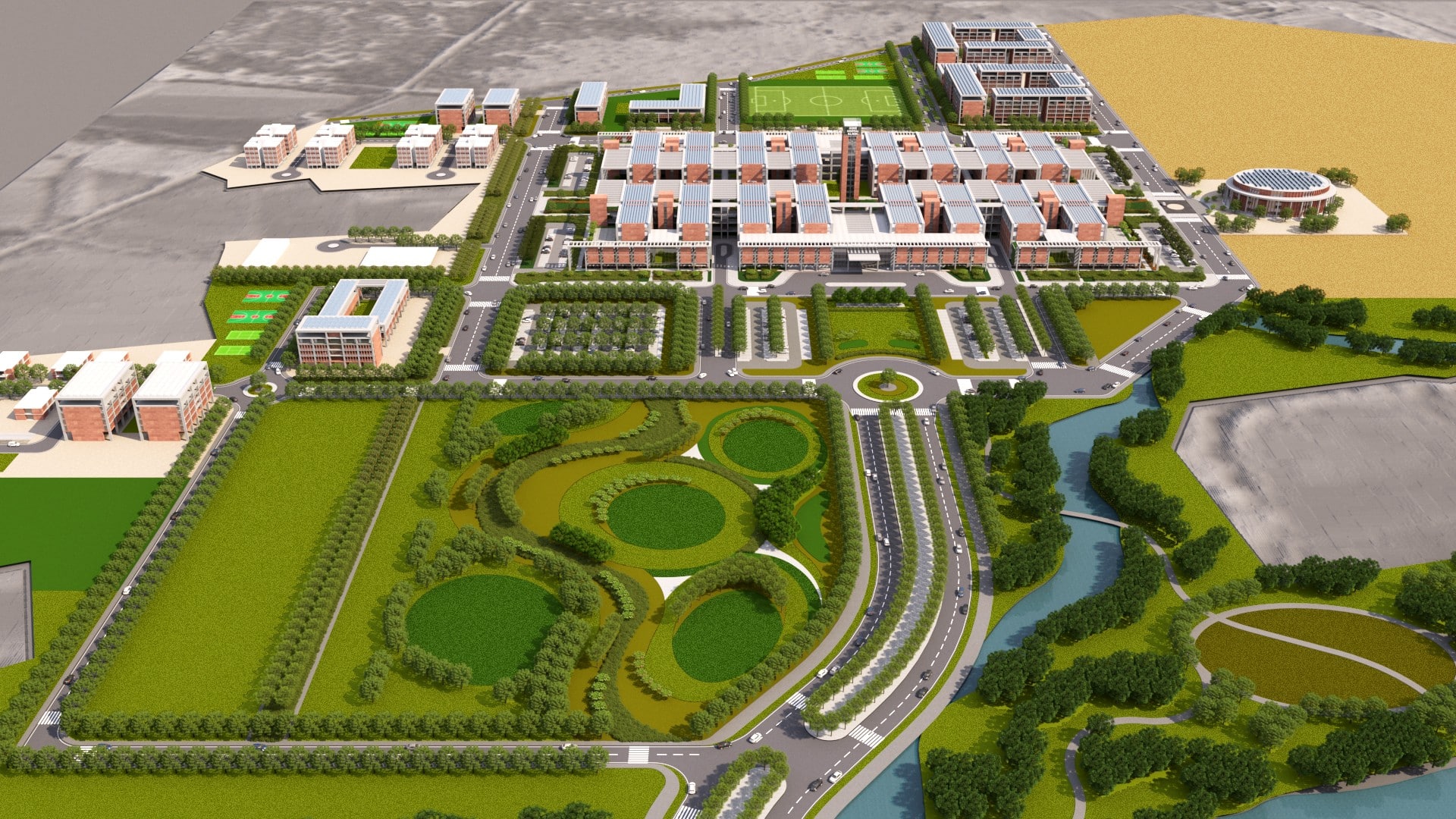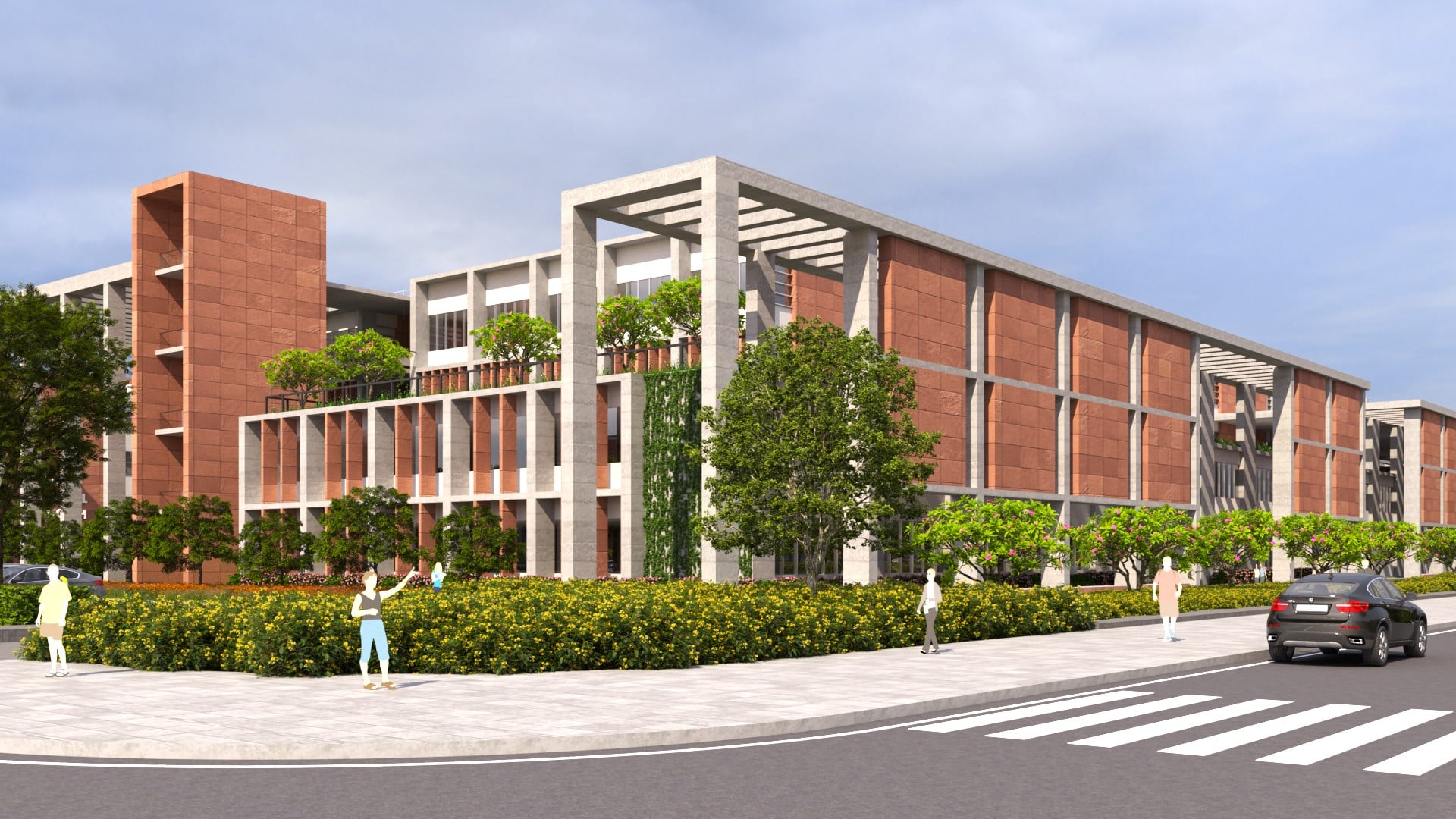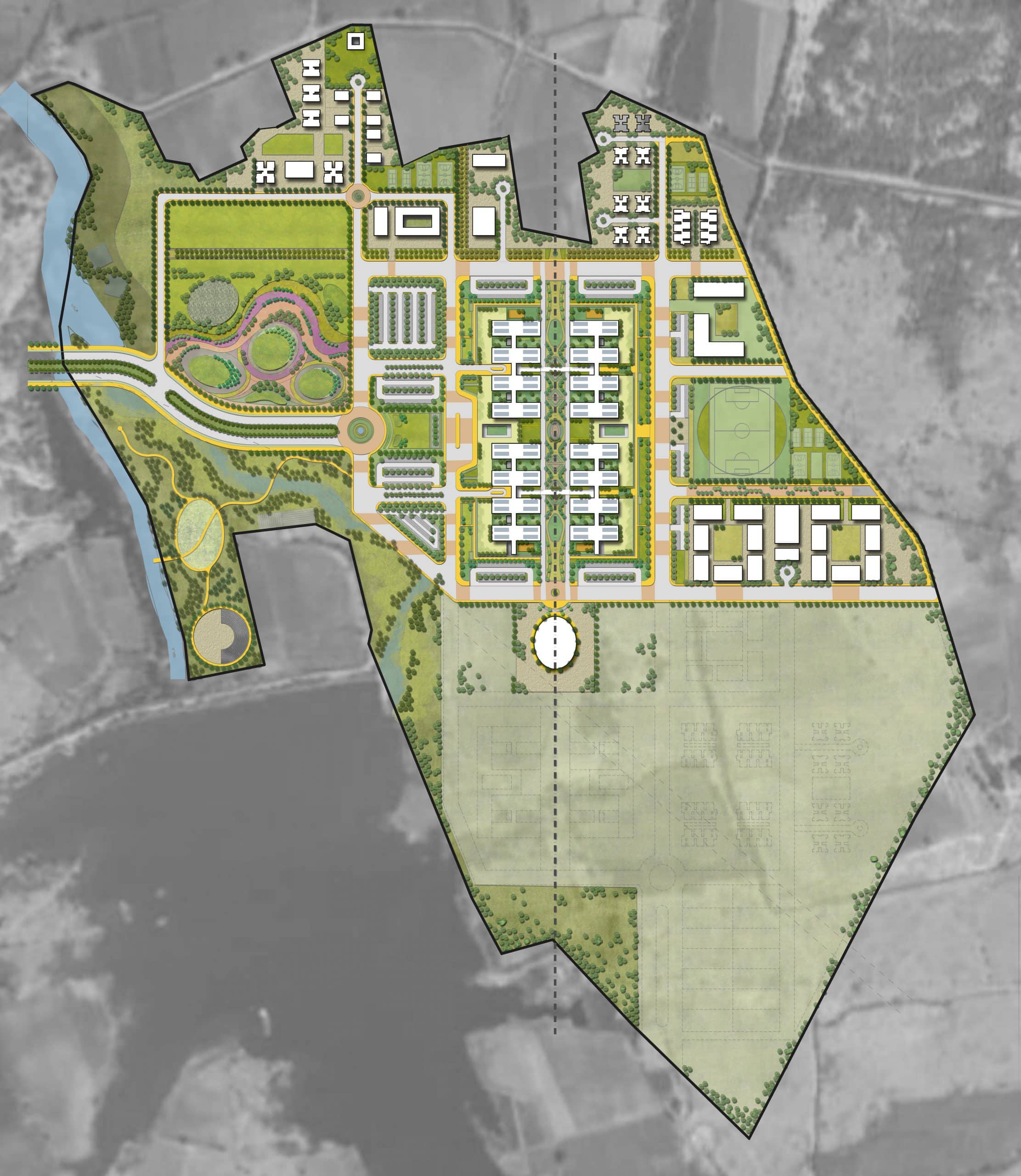
All India Institute Of Medical Sciences (AIIMS)
Rajkot, Gujarat, India
Campus Design for Holistic Healing
The All India Institute of Medical Sciences (AIIMS) at Rajkot in Gujarat was launched with the aim of providing state-of-the-art healthcare facilities to the people of Rajkot city and surroundings as well as to facilitate impactful research and education in the medical field. The campus is located on a 200 acre site bounded by an uneven edge, lying north of the Khanderi dam reservoir and to the south of an important irrigation canal. INI Design Studio’s design proposal has creatively engaged with the site’s natural endowments to lay out a campus that responds to and takes advantage of them.
Site Area : 200 Acres
Builtup Area : 13,98,000 SF
Services : Master Planning, Architecture, Sustainablity, Engineering, Landscape Design (Bid -Competetion Entry)
Share ►

Assuming a north-south axis running down the site, the two main elements viz. the hospital and the medical college have been lined up along either side of it. Student facilities like hostels, sports club and grounds, guest houses and residences of nursing staff are arranged to the east at the rear of the college. The farther eastern end which is also the highest point on the site remains reserved for future expansion.


To the west in front of the hospital, where one arrives at a plaza having entered after crossing a bridge across the river, vast open spaces are allocated to parking and expansive healing gardens having native herbal plantations and meditation spots. The areas north of the arrival plaza bear the residences of faculty, doctors and the director’s bungalow.
Integrated Design Establishing Efficiency, Envisioned to Inspire Excellence
The arrangement of an array of blocks of the hospital facilities facing the arrival plaza and drop off zone areas open out the complete menu of departments/ specialisations for patients and their families to easily access. Similarly, an identical array of medical college blocks laid out in a row just behind the hospital blocks makes easy the integration of corresponding departments in hospital and college facilities by smoothening the flow of materials, staff, doctors and students.


The ground plus two storey hospital and college blocks as well as other campus buildings are clad in terracotta rain-screen system framed by exposed concrete members which hold up pergola canopies which shade the deeply recessed facades from hot sun. The combination of concrete and the terracotta system articulate the campus in a blend of formal iconicity with warm vibrancy.
The glazed façade above the main entrance and the voids with lanes between the buildings induce a welcoming transparency. All the buildings like the hostels, sports facilities, guest house and residences have been designed with sensitivity towards, functional efficiency, experiential comfort and sustainability. The auditorium building sitting at the end of the rows of hospital and college blocks as a climax to the green avenue between them is made imposing by the massive circular canopy of pergolas topping the structure. To help protect patients, family members and caregivers from being infected by airborne pathogens, the HVAC system for the Hospital and relevant Medical College areas and associated ambulatory care areas use 100 percent outdoor air.


This innovative HVAC system draws in fresh air and then treats, conditions and filters it once before the air is used and exits the buildings. This use of 100 percent outdoor air reduces the risk of contaminants in the re-entrained air exhaust being into the building while improving indoor air quality and thermal comfort. In the hospital’s atrium lobby, a displacement ventilation air system enhances indoor air quality and cuts energy use. This system introduces large amounts of slow-moving fresh air in the occupied spaces, forcing the warmer waste air to rise toward the ceiling and be exhausted out of the building.
Designing an Environment Friendly Medical Campus as a Statement of Commitment Towards Those We Serve.


Oriented for Climatic, Environmental, Economic and Social Sustainability
Just as the design engages with socio-cultural aspects of the society it serves through its architectural sensitivity and choice of landscape elements, it also responds to mitigate the harsh effects of the local climate and harm to the environment. A variety of passive strategies like solar energy harvesting through PV panels, rain water harvesting, grey water recycling, façade systems like calibrated shading devices to reduce solar heat gain, glare and balance it with adequate daylighting of interiors, cross ventilation, and others have been employed. These make the campus sustainable in every sense, resulting in a comfortable, vibrant and wholesome learning and healing environment.
"Promoting Health in All its Dimensions."

